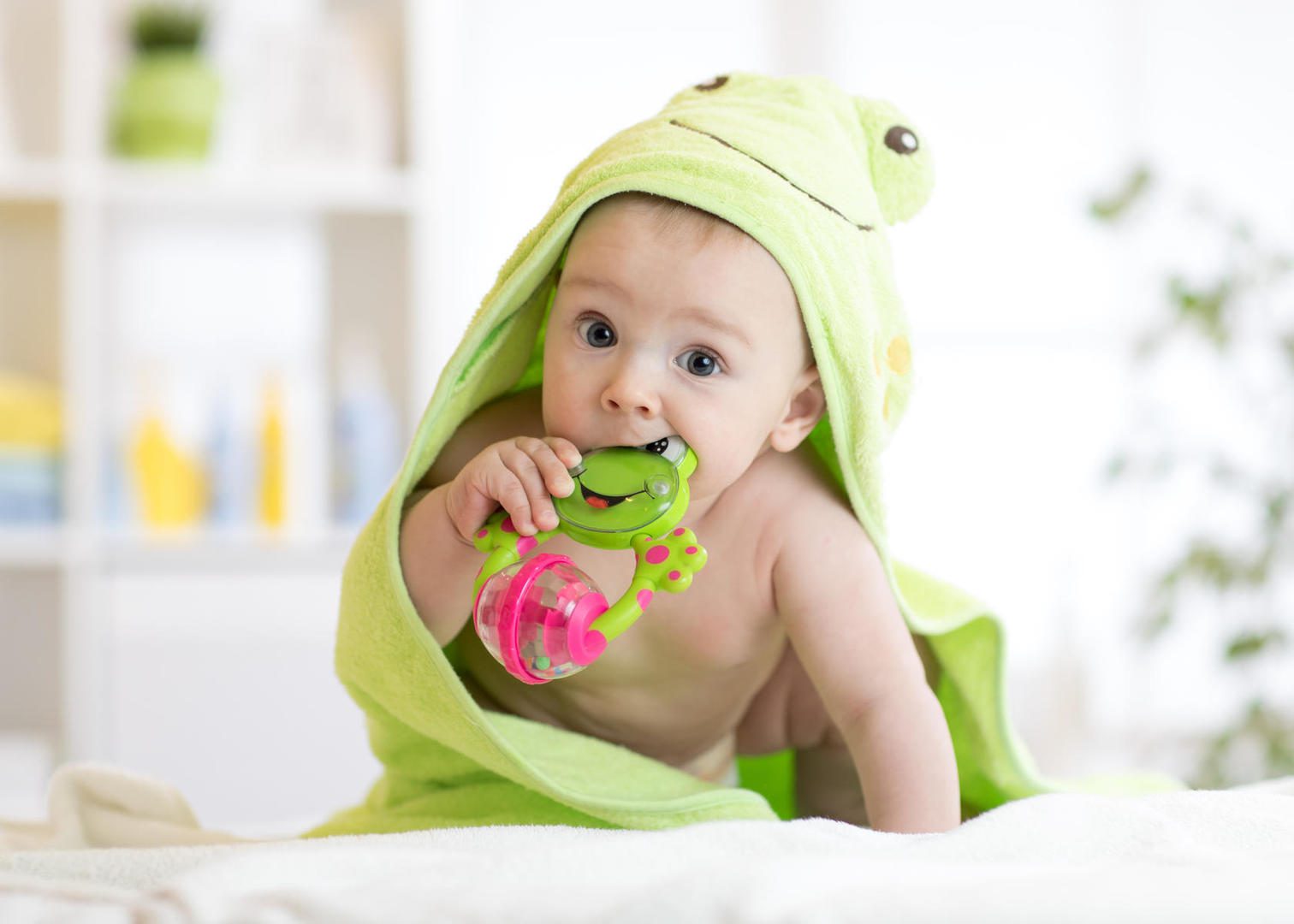 26 Feb 2019
26 Feb 2019
Know when to expect your tot’s first pearly whites—and how to care for them!—with this helpful baby teething chart and expert advice.
Teething can be a tumultuous time for both parents and baby: Your tot’s first teeth likely will come in just as she’s started sleeping through the night. (Oh, the cruel irony!) But once you know when to expect those pearly whites—thanks to this handy baby teeth chart—and learn how to care for them, this teething milestone will feel like child’s play.
Before baby teeth are even visible, there are key signs of teething you should look for, including fussiness. “Babies that are teething tend to cry a lot more, they don’t eat as well, and their sleeping patterns will change,” explains pediatric dentist Jonathan Shenkin, DDS, MPH. “But you’ll also see swollen gums and drooling as key signs of teething.”
Bookmark this teething chart and check inside your baby’s mouth every few months to keep tabs on her progress. If you don’t see any teeth after the 10-month mark, don’t fret (but do call your dentist).
According to Dr. Shenkin, an American Dental Association spokesperson, your child’s first tooth will be one of the bottom central incisors (the pair at the very front), which should make its debut between six and 10 months. After that, you’ll start to see the upper central incisors (the top two teeth) emerge between eight and 12 months.
“It’s not unusual for your child’s growth to be off that six-month period,” Dr. Shenkin explains. “There’s a pretty wide range for baby teeth eruption, so more often than not your kid is normal. Some children get their teeth at 4 months and others not until their first birthday.”
The next teeth to arrive are the upper lateral incisors (left front and right front bottom) between 9 and 13 months, followed by the lower lateral incisors (left front and right front bottom) sometime between 10 and 16 months. Then her first molars, both top, and bottom are due between 13 and 19 months, while her second set of molars push through the gums around 25 to 33 months. Canine teeth are typically the last to the party, coming in sometime after 22 months.
Keep in mind that if your child’s first tooth was a bit delayed, the rest will likely take their time, too. So you don’t need to freak out every time she misses a milestone by a few months or more, but Dr. Shenkin does recommend children get their first dental exam six months after the first tooth appears or by age 1, whichever comes first.
“I always encourage making an appointment and asking questions to help understand what’s going on inside their kids’ mouth,” he says.
Dr. Shenkin also emphasized that, contrary to popular belief, there is no proven correlation between fevers and tooth disruption, so if your child is experiencing a fever you should contact your pediatrician.
If your baby is unhappy as she’s cutting her teeth, apply gentle pressure on her gums with your finger. “This relieves the discomfort and distracts them,” Dr. Shenkin says.
You can also use teething toys to help ease the pain. “Never use liquid-filled teething rings because you don’t know what’s inside them,” Dr. Shenkin warns. “Always use a solid one and put it in the fridge or freezers; kids love when they’re cold.”
Dr. Shenkin strongly advises against the use of topical teething gels like Baby Oragel and Cepacol, which contain benzocaine that numbs the gum and have been linked to rare but deadly side effects in children under 2 years old.
After that first tooth comes in, parents should begin brushing with fluoride toothpaste twice every day. “Use only a tiny bit, about the size of a grain of rice, and gently brush to get your baby used to the sensation,” Dr. Shenkin says. “The fluoride is also critical because, when a tooth first emerges, it’s not completely mineralized. And as soon as it comes in, it’s at risk for decay. Fluoride helps strengthen that structure and enamel so it’s more resistant to damage.” By age three, your child should have all 20 of her baby teeth and you can begin using a pea-sized amount of toothpaste.
Original source can be found here.
